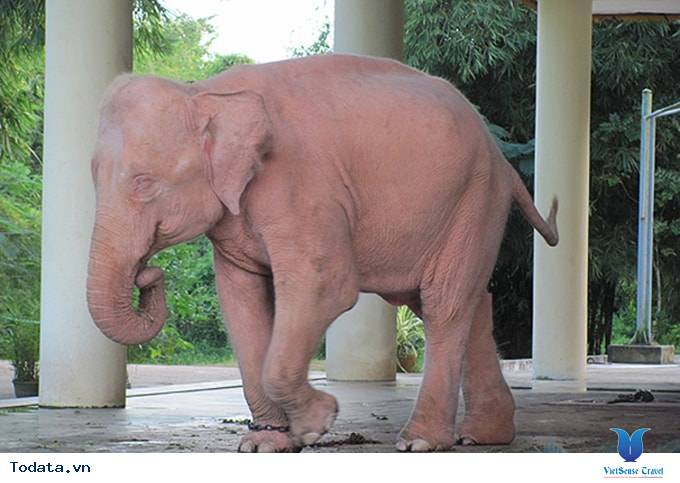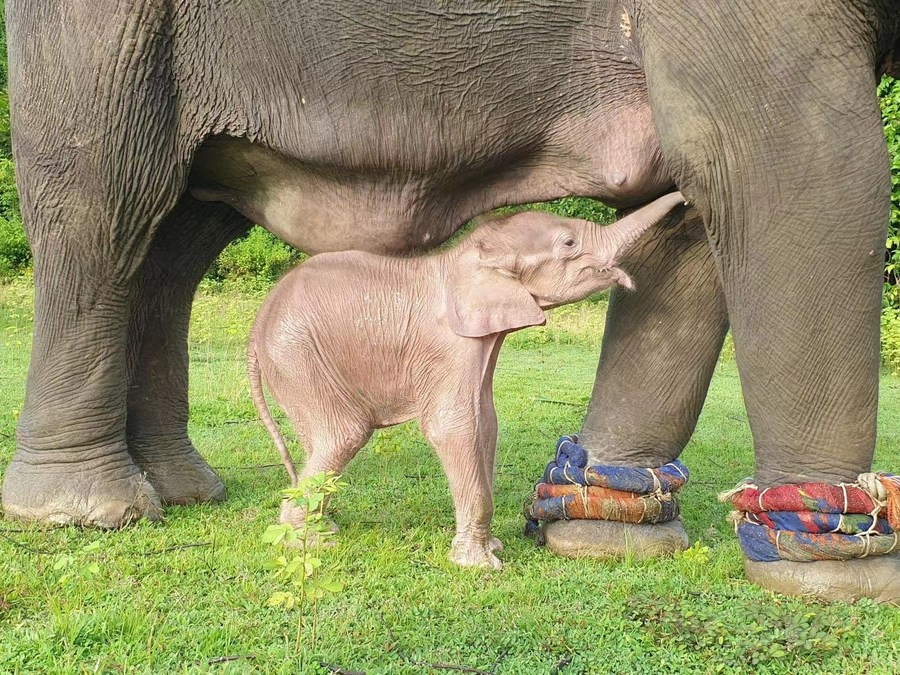In the heart of Myanmar’s wild landscapes, a momentous event unfolded, radiating joy throughout the wildlife community—a rare white elephant was born. This remarkable occurrence not only delighted the people of Myanmar but also held profound cultural and ecological significance, signifying the preciousness of this magnificent creature.

White elephants, often regarded as sacred and revered in many Southeast Asian cultures, have long been symbols of good fortune, wisdom, and peace. They are a rare genetic phenomenon, with their distinctive pale skin resulting from a genetic mutation. In Myanmar, the birth of a white elephant is considered an auspicious event, believed to bring blessings and prosperity to the nation.
The birth of this particular white elephant took place in a protected reserve, emphasizing the importance of conservation efforts in preserving the natural habitats of these magnificent creatures. The mother elephant, carefully monitored by wildlife authorities, gave birth to a healthy calf with ivory-white skin, setting the stage for celebration and reverence.
News of the white elephant’s birth quickly spread throughout Myanmar, sparking a sense of pride and joy among the local population. It was seen as a symbol of hope and renewal, particularly in a world where the survival of wildlife faces numerous challenges.

The significance of this birth extended beyond mere cultural and symbolic value. It served as a reminder of the importance of conservation efforts in safeguarding endangered species and their habitats. Myanmar, with its diverse wildlife and pristine landscapes, has increasingly become a focal point for conservation initiatives.
The rare white elephant calf was welcomed with open arms by both the wildlife authorities and the local communities. Efforts to protect and preserve its natural environment were intensified, ensuring a safe and thriving future for this majestic creature and its fellow wildlife inhabitants.

The joy and pride that accompanied the birth of the white elephant underscored the deep connection between humanity and the natural world. It serves as a reminder that the well-being of all living beings, whether human or animal, is intricately linked to the health of our planet.
In conclusion, the birth of a rare white elephant in Myanmar was a momentous event that brought joy to the wildlife community and celebrated the cultural and ecological significance of these magnificent creatures. It highlighted the importance of conservation efforts and underscored the need to protect the habitats of endangered species to ensure a harmonious coexistence between humanity and the natural world.



